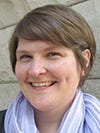Fuel station bars showcase healthy optionsFuel station bars showcase healthy options
Dining services at the University of Nebraska-Lincoln wanted to showcase the healthy options that are served in the dining halls.
March 4, 2014
Dining services at the University of Nebraska-Lincoln wanted to showcase the healthy options that are served in the dining halls. It wasn’t that students weren’t choosing healthy items on their own, explains Pam Edwards, assistant director of university dining service, but she and her team found that while healthy options are available, students “may not go to that area where it’s served to know that it’s there or have any information about [the item].”
So dining services added Fuel Station Bars to its Fuel My Story program, the food component of the universitywide initiative designed to provide a framework for the student journey at the University Nebraska at Lincoln.
The bars, which rotate among the five campus dining halls each Tuesday, group together nutritionally beneficial items already available from dining services. The bar is “taking some different things, as well as things that are commonplace and putting them together,” Edwards says. “For each of the menu items served we have a tidbit of nutrition information about the ingredients—short and concise [because] students want things that are fast.” The fuel station bars are also typically staffed to further educate that the items, such as lean proteins, low-fat dairy, whole grains and seasonal fruits, are always on the menu.
The bars bring some of the typically overlooked items to the forefront, such as the Quinoa Cake, so students can see that there are plenty of healthier options available. “We try and teach [that] you can have a healthful meal from the things that are [available from] dining services,” Edwards says. “It’s learning how to make choices and hopefully teaching. We’ll see if it’s successful to expand it to more days.”
The station has feedback cards to gather student comments, evaluate the program and incentivize students to engage with the bar. “We have cards to ask them what they chose to get a read on what they’re choosing,” Edwards explains. The team will use the cards to evaluate the success of the program and the items served, and once data is collected, the cards are put into a drawing for a Fuel Your Story T-shirt.
A few days before the bar is available, posters and cards are placed in the hall and on the serving lines to announce the location. “We’re trying to make the advertising unique to the unit and not do it a long time ahead,” Edwards says. “We also use Twitter as a reminder, [and we’re] expanding the use of social media.”
About the Author
You May Also Like





.jpg?width=300&auto=webp&quality=80&disable=upscale)
